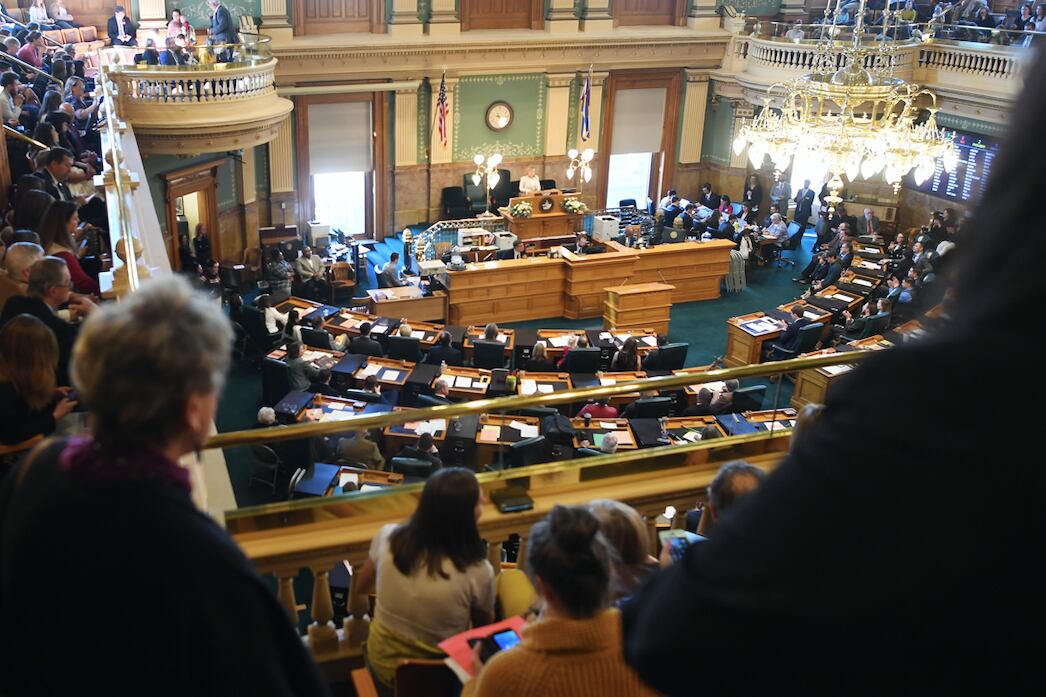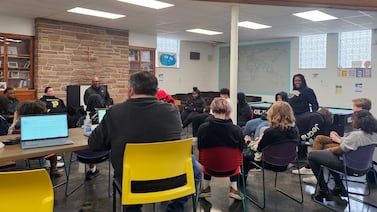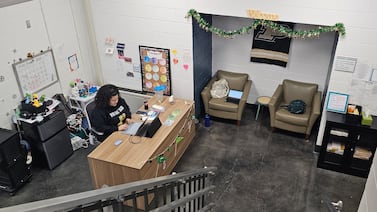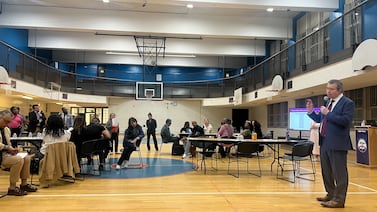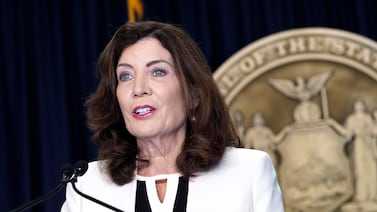Colorado schools face budget cuts that rival those of the Great Recession under the Public School Finance Act unveiled this week.
The cuts, which amount to roughly 15% less than what the state expected to spend on education just a few months ago, are no surprise at this stage of a painful budget process. The school finance bill calls for across-the-board cuts to districts, rather than targeting more money for the neediest districts.
It also lays out a complicated change in local property tax rates that won’t raise taxes or bring in any more revenue in the near term, but could set the stage for a larger funding reform down the road.
“This is a pretty tough bill this year,” said Speaker of the House K.C. Becker, a Boulder Democrat and the bill’s sponsor. “The impacts to school finance from the coronavirus crisis are significant. It puts a spotlight on the long-term budget situation that K-12 is in. We have some constitutional problems that are structural, and we have problems with the school finance formula and mill levies that compound those problems.”
K-12 education takes up 36% of the state’s general fund, and general fund revenue is projected to decrease by 25%. With lawmakers unwilling to consider a politically divisive emergency tax, deep cuts became inevitable.
Average per pupil spending would fall roughly 5% under this bill to a little more than $8,000 per pupil. The reductions are part of an effort to offset $3.3 billion in lost revenue due to the coronavirus downturn.
At a recent panel discussion, Marguerite Roza, a school finance expert from Georgetown University, noted that even small budget cuts hit school districts hard because their costs go up every year due to inflation, pension and health insurance obligations, and pay raises that are built into union contracts. Many school districts in Colorado have been preparing for cuts of 10% or more.
“You’re going to see some really difficult decisions around personnel and programs,” said Matt Cook of the Colorado Association of School Boards. “Superintendents and school boards will do everything they can to keep it away from the classroom, but that won’t always be possible.”
Some of those reductions could be offset by $510 million in federal coronavirus relief that Gov. Jared Polis made available to school districts, but many school administrators are concerned the dollars aren’t flexible enough to cover basic operating expenses.
Colorado’s constitution requires school spending to go up by a rate equal to population plus inflation, but since the Great Recession, lawmakers have held back money every year to pay for other budget priorities. The amount has totaled more than $8 billion over the last decade.
In recent years, school funding has increased, and the amount of this withholding has decreased. Last year, lawmakers finally agreed to fund full-day kindergarten, at an additional cost of $200 million, and put money into grant programs to improve mental health support and college access.
The coronavirus downturn has largely wiped out that progress toward providing schools what Colorado legally promises them. In addition to delaying many new grant programs, the school finance bill would withhold $1.2 billion from education for the 2020-21 school year. That’s 14%, or twice the rate of this year’s withholding.
This withholding, known as the budget stabilization factor, is an across-the-board cut, but it hits small, rural districts harder. Because of their small size and remoteness, they get more money for each student, which means each percentage-point cut costs them more. They also have fewer economies of scale to begin with.
Some education advocates pushed for districts to share the pain in other ways. Districts with a high cost of living, which usually serve wealthier communities, also get more money per student. Reducing the value of this factor by 5% would have freed up $68 million that the state could have used to offset cuts to districts with greater need.
This proposal doesn’t appear in the final version of the bill.
“Unfortunately, status quo groups lobbied to have that change removed at the last minute,” said Luke Ragland of the conservative education advocacy group Ready Colorado. “It’s yet another example of how the status quo fights change, which comes at the expense of the neediest students.”
Tracie Rainey, director of the Colorado School Finance Project, said changing formula factors could have unintended consequences and shouldn’t be done hastily.
“It sounds good to say we want to take money from here and put it there, but I’m not sure we know what the implications will be,” she said. “You need more time to do that, and this is a shortened session.”
Cook said most districts agree the formula needs to change but don’t think now is the time.
Leslie Colwell of the Colorado Children’s Campaign said inequities will only get worse if nothing changes. She hopes legislators look closely at the proposals and consider more comprehensive legislation next year.
Becker said groups representing education interests didn’t all agree on how they viewed changing the school finance formula. There was more agreement about beginning to address the patchwork of local property tax rates around the state.
The complex interaction of constitutional provisions has left Colorado school districts with a wide range of base property tax rates, which are currently frozen by state law. When local taxes don’t cover basic education costs, the state makes up the difference. Over time this has shifted more of the burden of K-12 education funding to the state, a situation that is increasingly untenable now that the state faces a huge shortfall.
The school finance bill would make the property tax rate uniform for most districts, setting it at 27 mills unless a lower rate would cover all of a district’s basic costs or the district had a lower rate at the time voters allowed it keep all revenue from existing taxes. The state would extend a credit back to districts, meaning no one would pay higher taxes — for now.
But future legislators might reduce those credits over time, requiring districts to cover more of their school costs.
“It creates a tool that someone could use down the road,” Becker said.
School districts are generally supportive of this aspect of the school finance act, though it could face pushback from other quarters.
The school finance act takes $100 million from the BEST program, which provides construction grants to cash-strapped school districts, leaving more money in the fund than had been recommended by the Joint Budget Committee.
The bill also calls for the formation of a working group to figure out what testing, accountability, and teacher evaluation should look like next year. The Colorado Association of School Executives had asked for the school accountability system, which depends largely on test scores, to be paused for three years due to the level of classroom disruption. That idea didn’t get traction with lawmakers, in part because of federal requirements that states administer annual assessments and in part because of concern that districts continue to monitor student progress.


